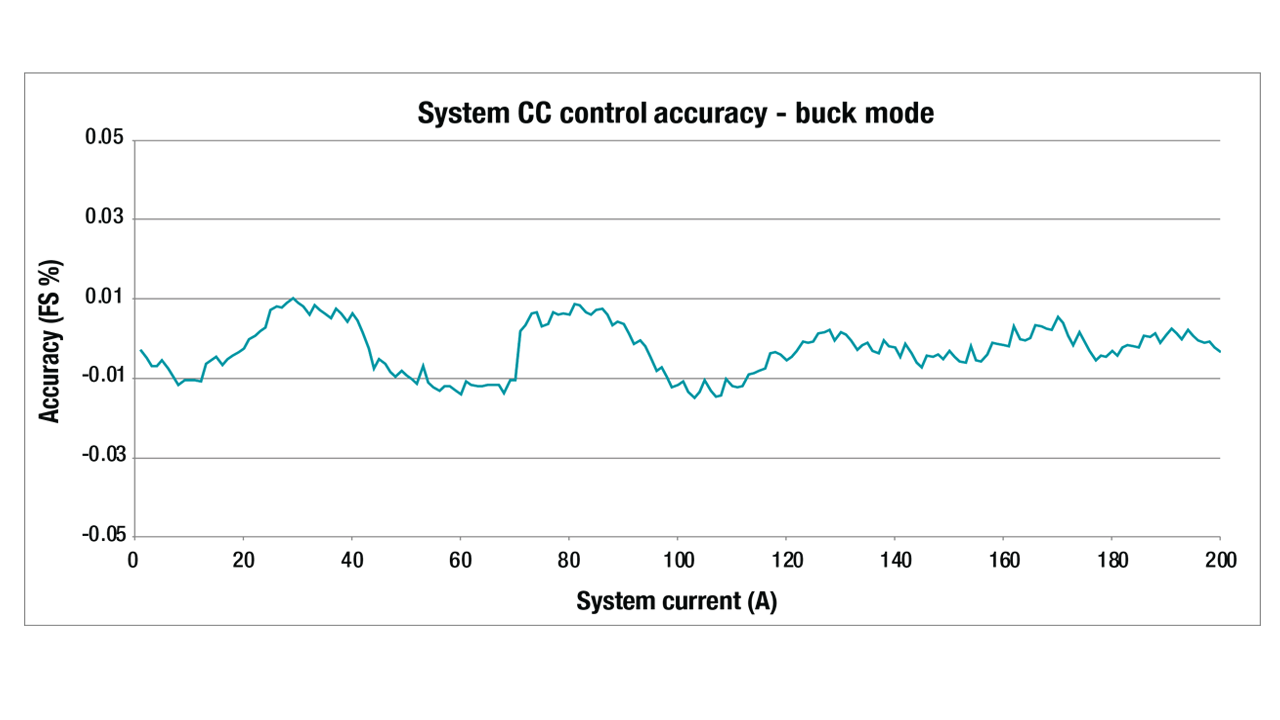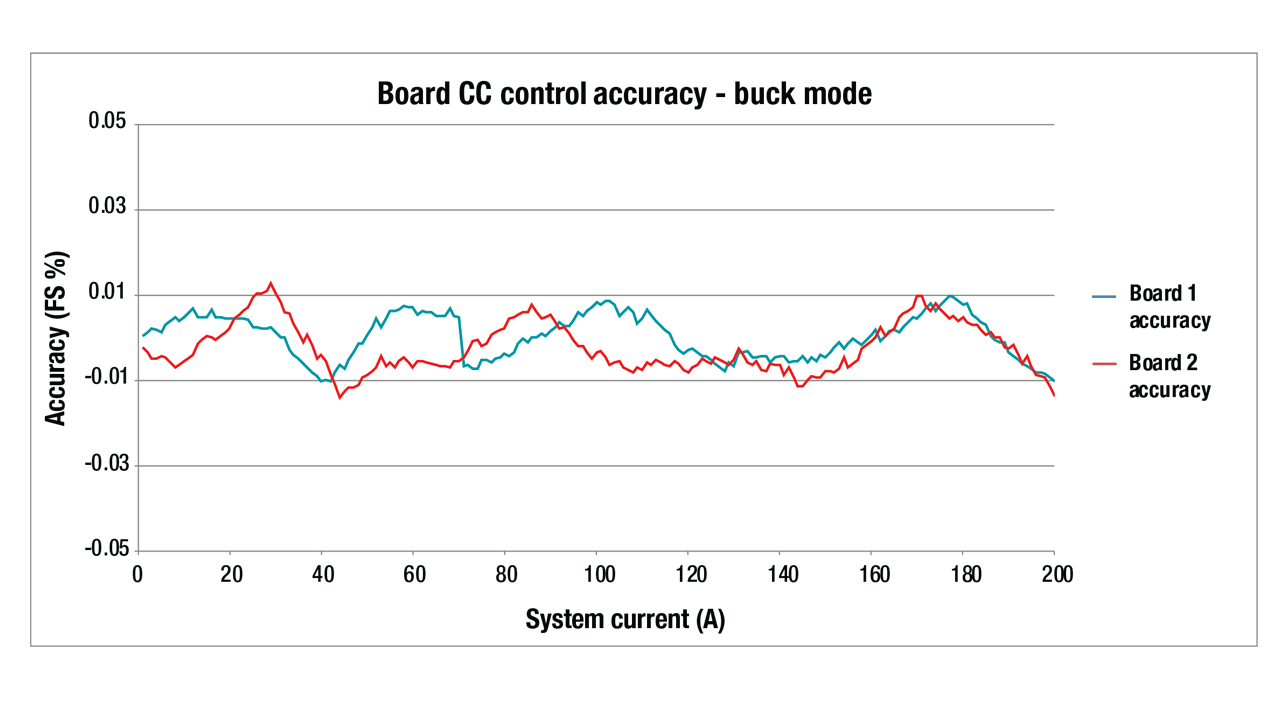SSZT461 june 2019 INA828 , LM5170-Q1
The demand for lithium-ion (Li-ion) batteries has increased rapidly over the past few years, and that demand does not appear to be slowing down anytime soon. Booming industries like electric vehicles and grid infrastructure are leading the way in Li-ion battery usage. As demand increases, so does the need for high-precision and high-current-capable battery test and formation equipment.
Every battery’s performance and lifespan is determined during the formation process, and battery test and formation equipment is designed for a specific application. Low-current equipment uses converters with integrated switching field-effect transistors (FETs) to charge and discharge. Medium-current equipment uses single-phase controllers with external switching FETs. High-current equipment uses multiphase controllers and also increases the number of phases (as well as the size and cost of components) as the current capability increases.
TI’s Modular Battery Tester Reference Design for 50-A, 100-A and 200-A Applications uses a combination of 50-A and 100-A battery test designs to create a modular version capable of reaching 200-A maximum charge and discharge levels. This reference design gives you the ability to use a modular-level design to satisfy the different levels of high-current battery-tester needs. A modular design creates the option of using multiple, lower-current battery tester channels connected in parallel for high-current applications, enabling more flexibility and helping save costs.
The modular battery tester reference design uses two Battery Tester Reference Design for Multi-Phase High-Precision 0.5 to 100 A Battery Formation boards, which are capable of 100 A maximum each, or four Battery Tester Reference Design for High Current Applications boards, which are capable of 50 A maximum each, in parallel to achieve the maximum 200 A of current while also maintaining high accuracy.
Used in parallel, the two boards from the battery formation battery tester reference design maintain current- and voltage-control accuracies of 0.02% or less. The boards keep that high level of accuracy while also increasing the current to 200 A. Figure 1 shows the level of current-control accuracy maintained over the entire 200-A range.
 Figure 1 Constant-current Buck
Accuracy
Figure 1 Constant-current Buck
AccuracyWhen calibrating the system, it is important to calibrate each board separately. Each board has its own control loop, so the system will maximize its accuracy by dealing with each control loop separately. Figure 2 shows the calibrated error for each board used in the system. Since you can use each board separately or in parallel, you must use the individual calibrations for the system.
 Figure 2 Two Board Configuration for
Constant Current Calibration
Figure 2 Two Board Configuration for
Constant Current CalibrationThe Modular Battery Tester for 50 A, 100 A, and 200 A Applications demonstrates high accuracy, high current and flexibility, which are key considerations for battery test equipment. With this design, you can invest in lower-current battery test equipment and have the ability to use the equipment in parallel, instead of investing in different architectures for different current levels. You can now use test equipment for a range of currents instead of having high-current equipment that sits unused for low-current applications and low-current equipment that sits unused for high-current applications, enabling more flexibility and helping save costs.